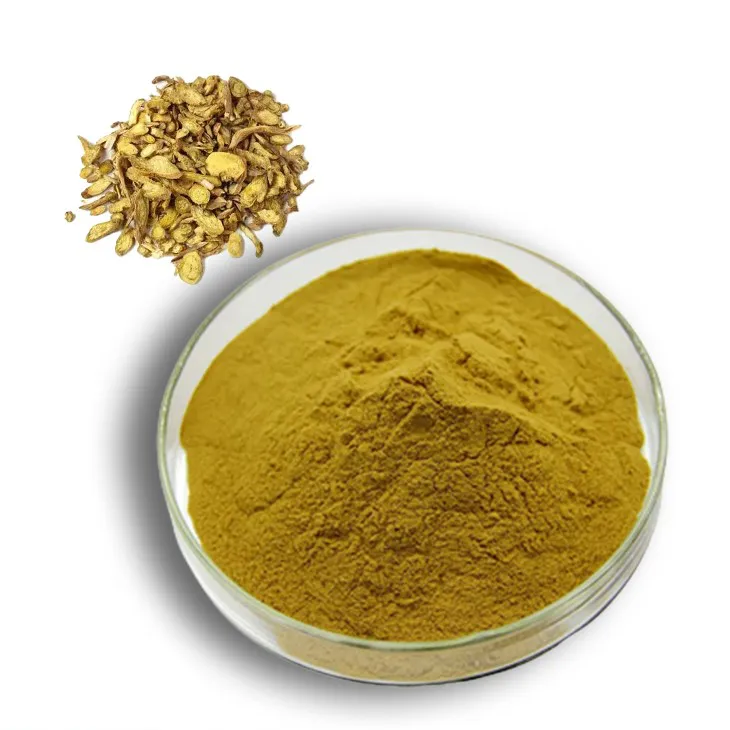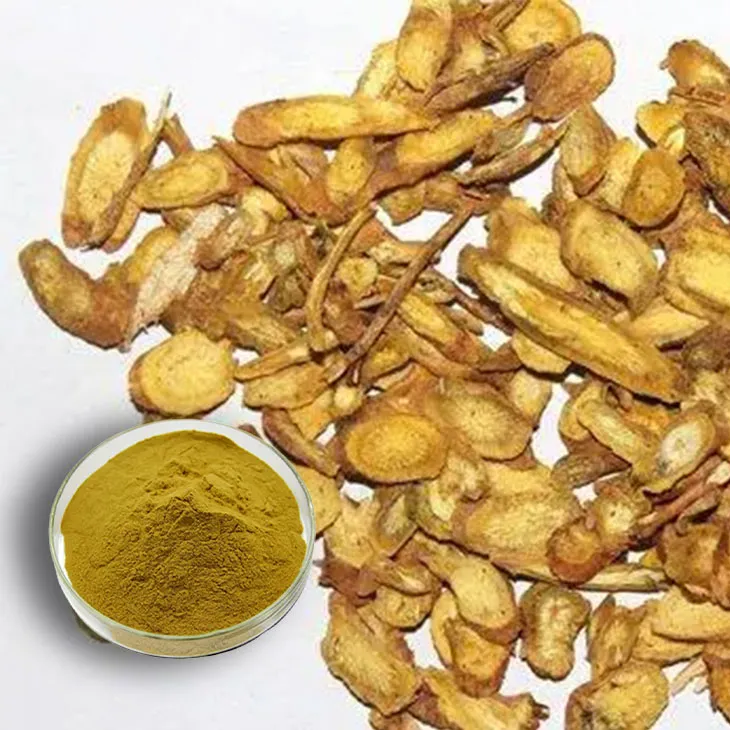Baicalin vs Quercetin: A Comparison of Herbal Flavonoids
2025-08-21 10:26:21
Baicalin extract and quercetin are two powerful herbal flavonoids that have garnered significant attention in the world of natural health and wellness. Both compounds offer a range of potential benefits, yet they differ in their sources, chemical structures, and specific mechanisms of action. Baicalin, primarily derived from Scutellaria baicalensis (Chinese skullcap), is known for its anti-inflammatory, antioxidant, and neuroprotective properties. Quercetin, found in various fruits and vegetables, is celebrated for its robust antioxidant capacity and potential cardiovascular benefits. This comparison aims to elucidate the unique characteristics of each flavonoid, exploring their similarities, differences, and potential synergistic effects when used in combination.

How Do Baicalin and Quercetin Differ in Structure and Function?
Chemical Composition and Natural Sources
Baicalin, a flavone glycoside, is primarily extracted from the roots of Scutellaria baicalensis. Its chemical structure features a sugar molecule attached to the flavone backbone, which influences its solubility and bioavailability. Baicalin powder is often used in research and supplement formulations due to its concentrated form.
Quercetin, on the other hand, is a flavonol found abundantly in nature. It occurs in various fruits, vegetables, and herbs, including apples, onions, and green tea. The structural differences between baicalin and quercetin contribute to their distinct pharmacological profiles and absorption patterns in the body.
Bioavailability and Metabolism
The bioavailability of baicalin extract is a topic of ongoing research. Upon ingestion, baicalin is metabolized to its aglycone form, baicalein, which is then absorbed and can be converted back to baicalin in the bloodstream. This metabolic pathway influences its distribution and effects throughout the body.
Quercetin's bioavailability is generally considered to be lower than that of baicalin. However, its widespread presence in the diet and its ability to form metabolites that retain biological activity contribute to its overall impact on health. The metabolism of quercetin involves various phase II enzymes, resulting in conjugated forms that circulate in the bloodstream.
Receptor Interactions and Cellular Targets
Baicalin and quercetin interact with different cellular receptors and signaling pathways. Baicalin has shown affinity for GABA receptors, contributing to its potential anxiolytic and neuroprotective effects. It also modulates various inflammatory mediators and antioxidant pathways.
Quercetin's cellular targets include a wide range of enzymes and signaling molecules involved in inflammation, oxidative stress, and cell cycle regulation. Its ability to inhibit certain kinases and influence gene expression patterns underlies many of its proposed health benefits.

Anti-Inflammatory and Antioxidant Mechanisms Compared
Modulation of Inflammatory Pathways
Baicalin extract exhibits potent anti-inflammatory properties through multiple mechanisms. It has been shown to inhibit NF-κB activation, a key transcription factor in inflammatory responses. Additionally, baicalin modulates the production of pro-inflammatory cytokines such as TNF-α, IL-6, and IL-1β.
Quercetin's anti-inflammatory effects are well-documented and involve similar pathways. It suppresses the production of inflammatory mediators and inhibits the activity of cyclooxygenase and lipoxygenase enzymes. The comparative efficacy of baicalin and quercetin in managing chronic inflammatory conditions is an area of ongoing research.
Antioxidant Capacity and Free Radical Scavenging
Both baicalin and quercetin possess strong antioxidant properties, but their mechanisms differ slightly. Baicalin acts as a potent free radical scavenger and enhances the activity of endogenous antioxidant enzymes such as superoxide dismutase and catalase. Its ability to chelate metal ions further contributes to its antioxidant effects.
Quercetin is renowned for its exceptional antioxidant capacity. It directly neutralizes various reactive oxygen species and nitrogen species. Moreover, quercetin upregulates the expression of antioxidant genes through the activation of the Nrf2 pathway, providing a comprehensive defense against oxidative stress.
Neuroprotective and Cardiovascular Effects
Baicalin's neuroprotective properties stem from its ability to cross the blood-brain barrier and modulate neurotransmitter systems. It has shown promise in protecting against neurodegenerative disorders and improving cognitive function. The baicalin powder form is often used in research investigating these neurological benefits.
Quercetin's cardiovascular protective effects are attributed to its antioxidant properties and its ability to improve endothelial function. It may help reduce blood pressure and inhibit platelet aggregation, contributing to overall heart health. The comparison of baicalin and quercetin in cardiovascular protection reveals complementary mechanisms that could be leveraged in nutraceutical formulations.
Synergistic or Competitive Roles in Nutraceutical Combinations
Potential for Enhanced Therapeutic Effects
The combination of baicalin and quercetin in nutraceutical formulations presents intriguing possibilities for enhanced therapeutic effects. Their distinct yet complementary mechanisms of action suggest potential synergies in managing oxidative stress and inflammation. For instance, the combination might offer more comprehensive protection against cellular damage and oxidative stress-induced pathologies.
Research into the synergistic effects of baicalin extract and quercetin is ongoing, with preliminary studies indicating promising results in areas such as neuroprotection and cardiovascular health. The potential for these flavonoids to work in concert to modulate multiple physiological pathways simultaneously is an exciting prospect for nutraceutical development.
Absorption and Bioavailability Considerations
When combining baicalin and quercetin, it's crucial to consider their respective absorption profiles and potential interactions. While baicalin powder may offer improved solubility compared to its natural form, quercetin's bioavailability can be enhanced through various formulation strategies.
The presence of both compounds in a single formulation might influence their individual absorption rates and metabolic pathways. Careful consideration of dosage, timing, and delivery methods is necessary to optimize the bioavailability and efficacy of these flavonoids when used in combination.
Safety and Dosage Optimization
The safety profiles of baicalin and quercetin as individual compounds are generally favorable. However, their combined use necessitates careful evaluation of potential interactions and cumulative effects. Dosage optimization is crucial to harness the benefits of both flavonoids while minimizing the risk of adverse effects.
Clinical studies exploring the optimal ratios and dosages of baicalin and quercetin in combination are limited but growing. As research progresses, it will be essential to establish evidence-based guidelines for their combined use in various health applications, ensuring both safety and efficacy.
Conclusion
Baicalin and quercetin, while both classified as flavonoids, offer unique and complementary benefits in the realm of natural health compounds. Their distinct chemical structures, sources, and mechanisms of action contribute to a diverse array of potential health benefits, ranging from potent antioxidant and anti-inflammatory effects to specific neuroprotective and cardiovascular advantages. As research continues to unveil the intricacies of their individual and combined effects, the potential for synergistic formulations becomes increasingly promising. The thoughtful integration of baicalin extract and quercetin in nutraceutical products may pave the way for more comprehensive and effective natural health solutions.
Contact Us
For more information on our high-quality baicalin extract and baicalin powder products, or to explore potential collaborations in nutraceutical development, please contact us at Andy@sanxinbio.com. Our team of experts is ready to assist you in leveraging the power of these remarkable flavonoids for your next innovative health product.
References
1. Chen H, et al. Comparative pharmacokinetics of baicalin after oral administration of pure baicalin, Radix scutellariae extract and Huang-Lian-Jie-Du-Tang to rats. Journal of Ethnopharmacology. 2016;
2. Li Y, et al. Quercetin, Inflammation and Immunity. Nutrients. 2016;
3. Nabavi SF, et al. Neuroprotective effects of flavonoids: an updated review of their mechanisms of action. Current Medicinal Chemistry. 2015;
4. Xu M, et al. Baicalin can scavenge peroxynitrite and ameliorate endogenous peroxynitrite-mediated neurotoxicity in cerebral ischemia-reperfusion injury. Journal of Ethnopharmacology. 2013;
5. Anand David AV, et al. Overviews of Biological Importance of Quercetin: A Bioactive Flavonoid. Pharmacognosy Reviews. 2016;
6. Gao Z, et al. Synergistic effects of curcumin and baicalin in treating inflammation-related diseases. Pharmaceutical Biology. 2019;